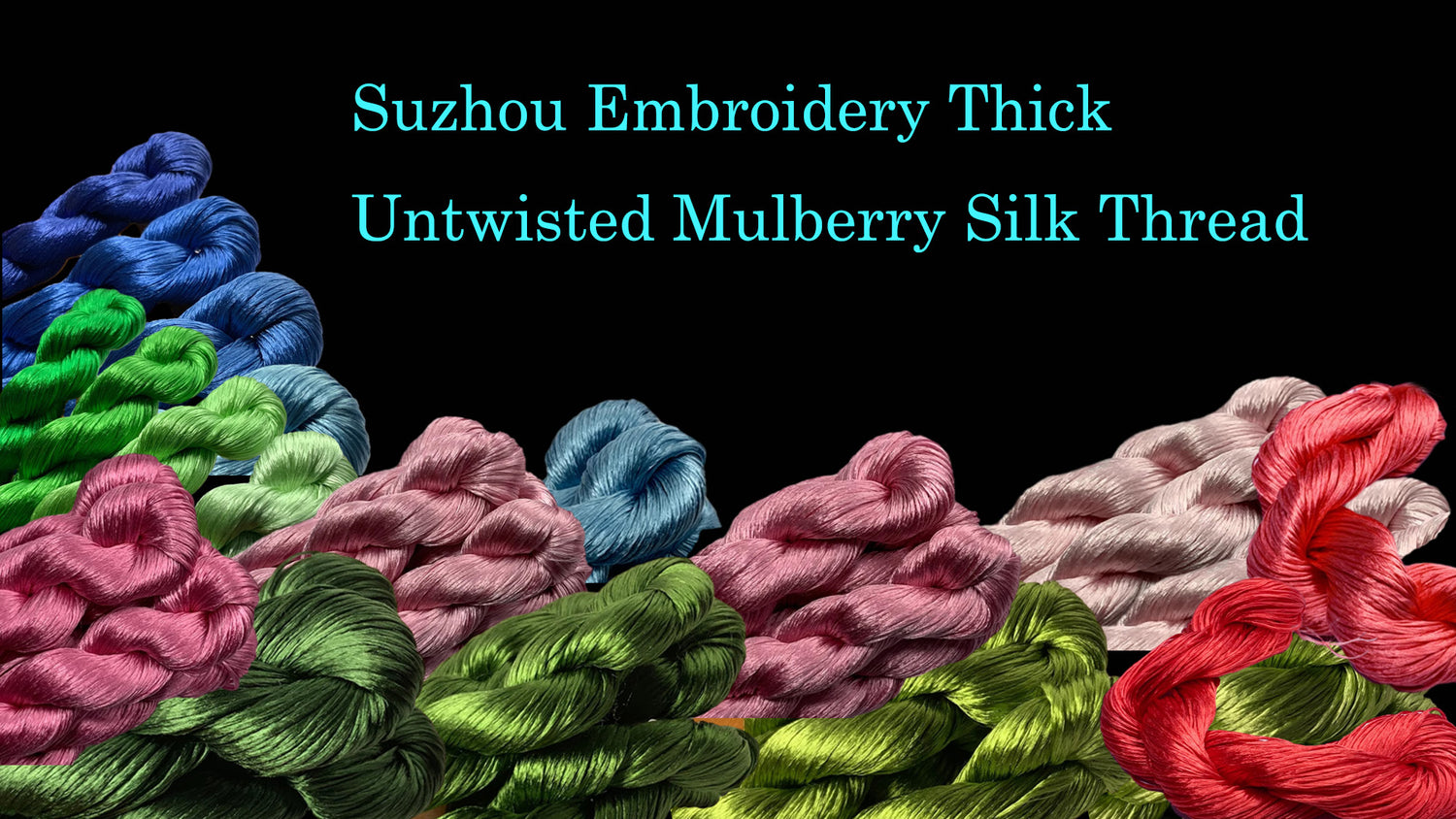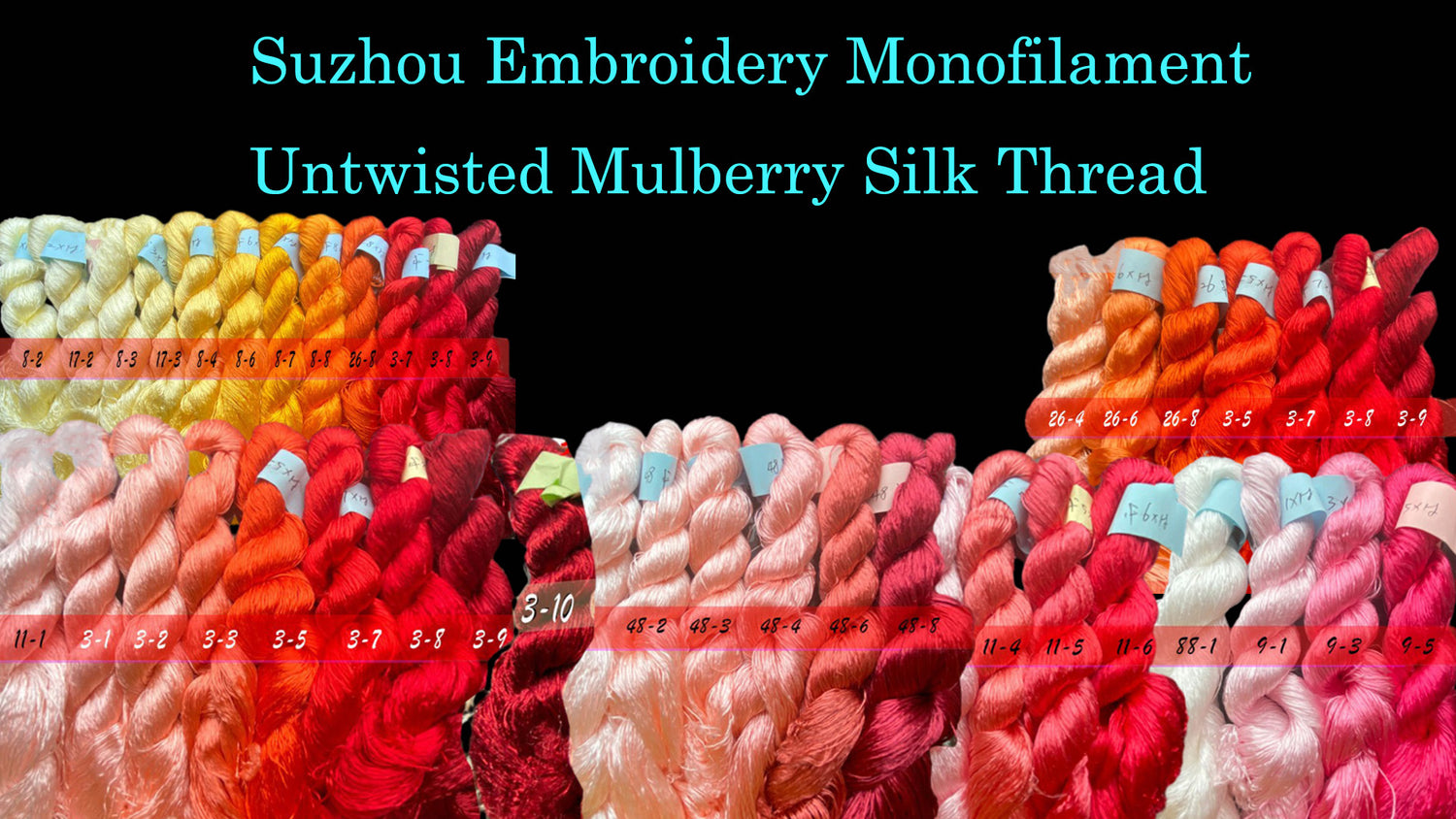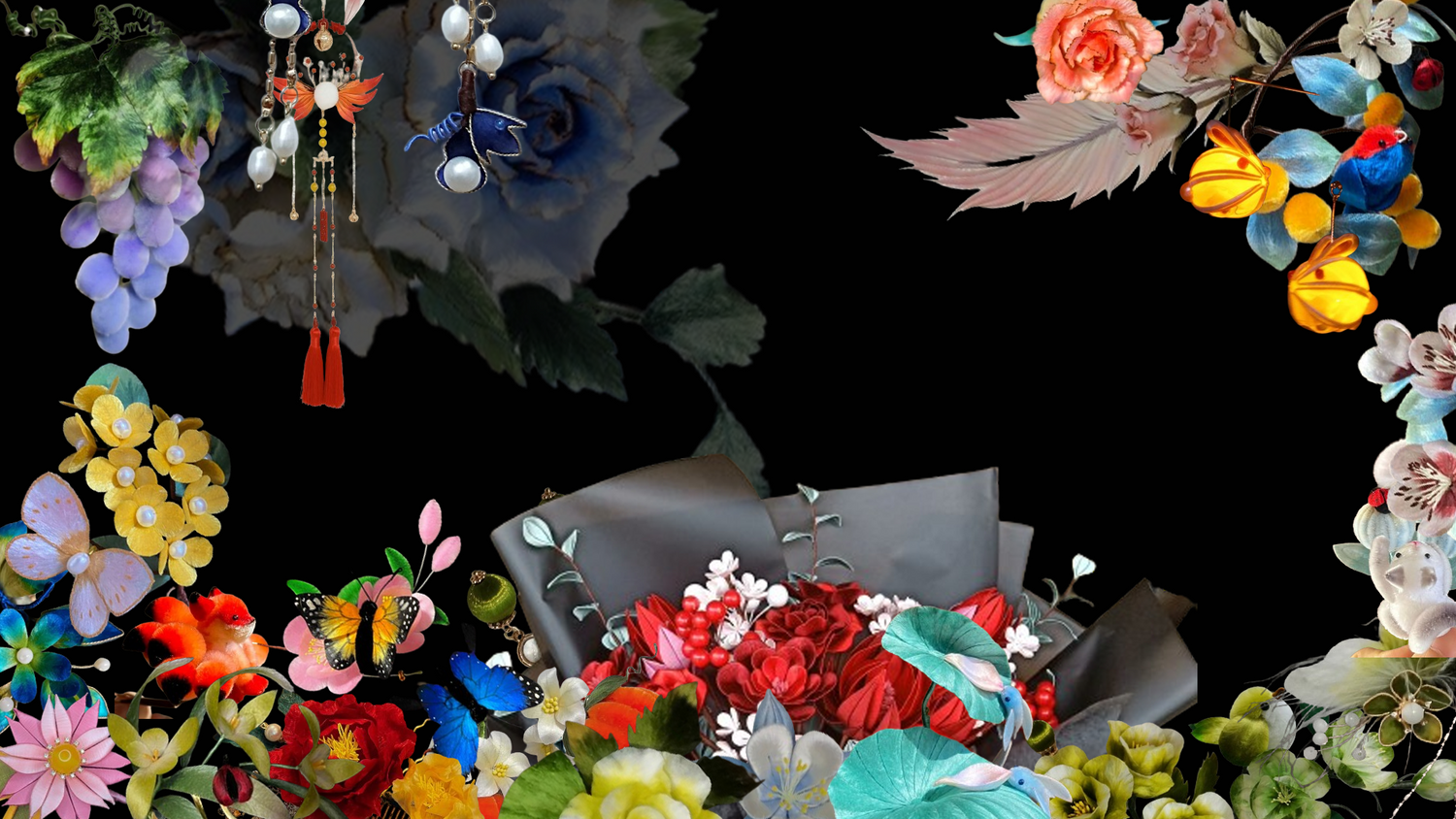
Organizing and Combing Steps of Hunan Embroidery Thread - Ronghua(Velvet Flower)
Share

Figure 1
2.Open the roll, find the position of the thread head, and cut this place completely with scissors, as shown in Figure 2.

It should be noted that the scissors for cutting silk threads cannot be used to cut velvet combs, nor can they be used to trim velvet strips. You need to prepare a pair of scissors separately. We will write a separate article later on how to choose the right scissors. Let’s skip this here.
3.Take out a disposable chopstick (as shown in Figure 3), wrap it with transparent tape to prevent the wood chips on the chopstick from scratching the silk thread. You can also use a thicker sweater needle instead.

4.Take out a silk thread from the opened silk threadand hold it, hang it on the wooden chopstick, and then tie a knot to fix it on the wooden stick (as shown in Figure 4). Fix each silk thread on the wooden stick in turn until you arrange the width you want. Then fix the tied silk on the rack.

5.Splitting thesilk thread, first, the left hand holds the bottom of a silk thread, the right hand is near the position of the tied silk thread, the thumb and index finger cooperate with each other, twist the silk thread from left to right to separate it (as shown in Figure 5).

In this way, the first step of splitting the silk thread is completed. As shown in Figure 6, the left side is the split silk thread, and the right side is the unsplit silk thread.

Take out a split silk thread, pick out a part to make it spread out, and operate each silk thread in this way. Figure 7 is a comparison of the split silk thread and the unsplit one. The left side is split, and the right side is not split.

6.Combing, divide the split silk thread (as shown in Figure 8) into 3-4 parts according to the width of the velvet comb (as shown in Figure 9), and comb them separately (as shown in Figure 10). The left hand straightens the split silk thread, and the right hand uses a brush to start combing from the bottom, gradually starting to comb upwards until it is completely smooth.



Combine the combed velvet combs in sections (as shown in Figure 11), comb them together (as shown in Figure 12), until the silk thread presents a fluffy state (as shown in Figure 13). We will write a separate article later to explain some problems that may be encountered during combing, such as frizz, knotting, etc. Let’s skip this here. If you want to understand the explanation steps in more detail, you can click here to watch the free video tutorial.











